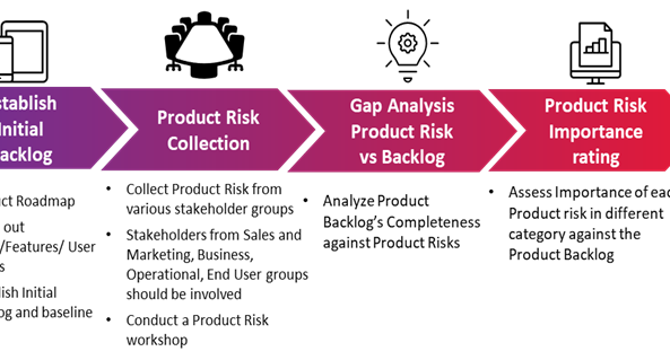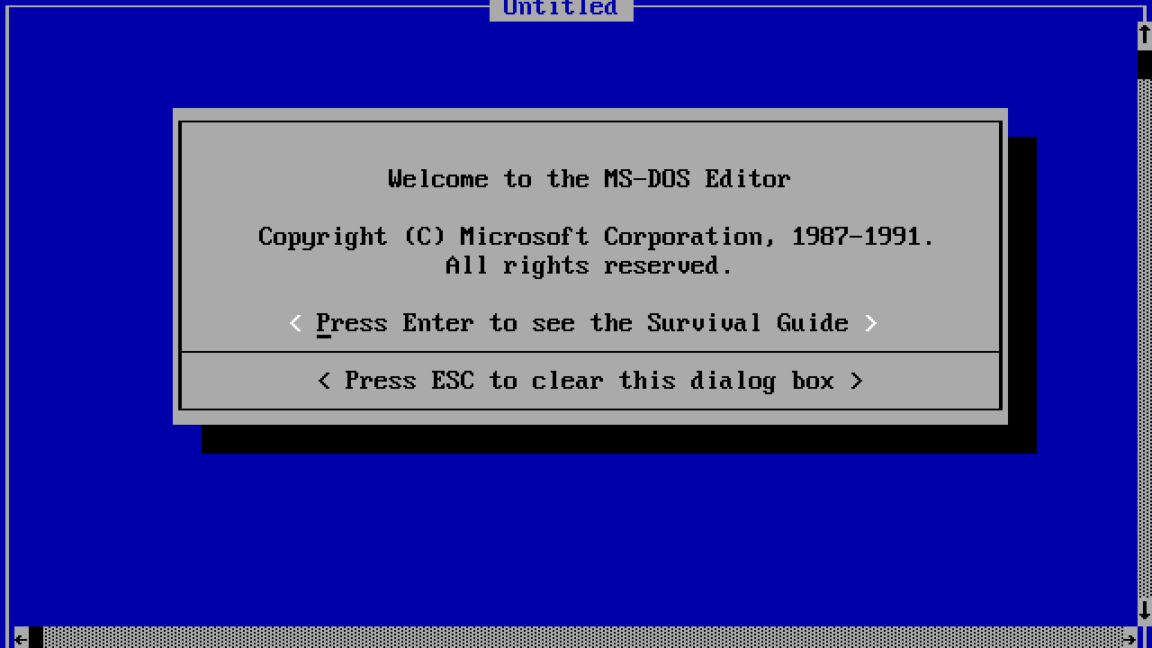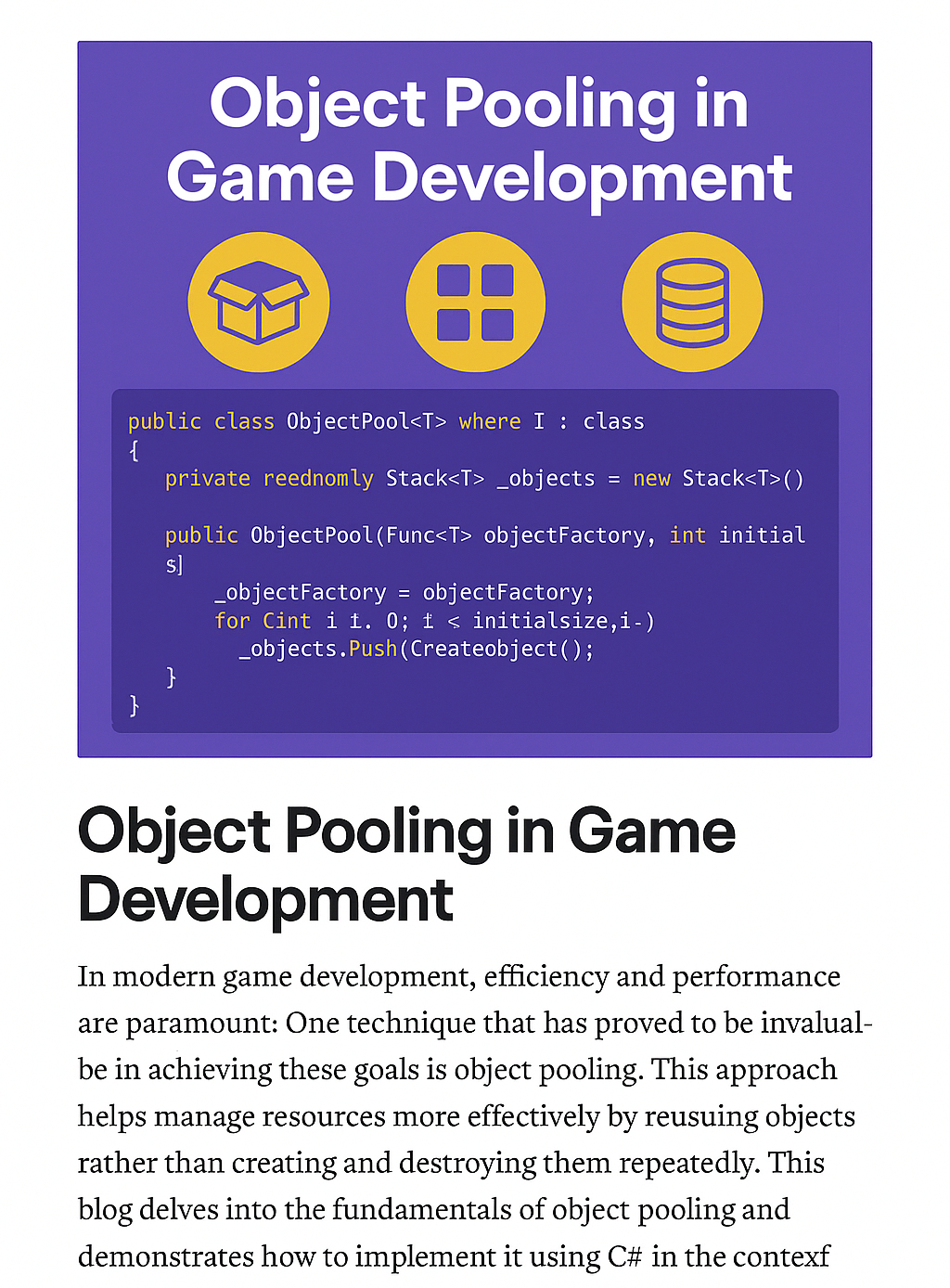Programming News
Dev
358

Image Credit: Dev
Day 1/100: Why Learn Python in 2025?
- Python remains relevant and powerful in 2025, catering to various industries and technologies.
- Reasons to learn Python include its easy-to-learn syntax and widespread career opportunities across different sectors.
- Python is prominent in AI, ML, data science, and offers libraries like TensorFlow and PyTorch for such applications.
- Frameworks like Flask, Django, and FastAPI make web development and API creation seamless with Python.
- Python simplifies automation of tasks and enjoys massive community support for problem-solving.
- The Python Package Index offers a vast library selection, enabling faster development by utilizing existing packages.
- Python's continuous improvement in performance and features like static typing ensures its future-proof nature.
Read Full Article
21 Likes
Medium
244

Image Credit: Medium
An Approach to Product Backlog Management Using Product Risk
- This paper introduces a risk-driven approach in product backlog management using 'Product Risks' defined as chances of failure not meeting user expectations during product development.
- By identifying, analyzing, and prioritizing product risks, teams can enhance product quality and avoid defects, merging FMECA and QFD for better traceability and risk-aware development.
- The framework includes stakeholder identification, roadmap definition, risk collection, analysis, and mapping to functional/design characteristics using QFD.
- The proposed methodology ensures all stakeholders are involved, risks are aligned with product features, and traceability between risks and design attributes is maintained.
- Utilizing QFD aids in translating user needs into design considerations to address product risks effectively.
- The approach prioritizes application traits, uncovers gaps, and guides development efforts based on identified risks and design attributes.
- It also benefits testing teams by focusing on critical areas, providing a comprehensive test plan based on FMECA and QFD analysis.
- The methodology enhances user satisfaction by ensuring product features are prioritized objectively and defects are actively managed.
- The structured process enables teams to tackle potential product failures through proactive risk identification and mitigation.
- Overall, the framework offers traceability, prioritization through deep analysis, and heightened customer satisfaction in product development.
- The article presents a valuable approach in managing product backlogs using risk-driven methodology, improving quality, and ensuring user needs are effectively translated into design features.
Read Full Article
14 Likes
Medium
74

Image Credit: Medium
“️ Give Your Python Code a Voice: A Beginner’s Guide to pyttsx3"
- pyttsx3 is a Python library for offline text-to-speech conversion.
- It offers more control over voice properties like rate, volume, and gender compared to online tools.
- It is cross-platform and suitable for both beginners and advanced users.
- Installation is straightforward, but on Windows, 'pypiwin32' might be needed for smooth operation.
- A simple script example is shown to make text speak using pyttsx3.
- Customization options include changing voice (male to female), speech rate, and volume.
- Switching voices involves accessing and setting the 'voices' property.
- The speech rate can be adjusted using the 'rate' property.
- Volume levels can be set between 0.0 (lower) to 1.0 (louder).
- An example of creating and saving an audio file using pyttsx3 is provided.
- This tool allows for adding voice to Python projects without relying on the cloud.
- It simplifies making Python code more expressive and versatile.
- Python scripts can be programmed to provide spoken feedback.
- Overall, pyttsx3 is user-friendly and powerful for integrating speech capabilities.
- It is recommended for tasks like automation, accessibility, and enhancing code expressiveness.
Read Full Article
4 Likes
Dev
78

Image Credit: Dev
The AI Revolution is Here: Are You Ready, or Will You Be Left Behind?
- Artificial intelligence (AI) is becoming prevalent in software development, with tools like GitHub Copilot and language models like GPT aiding developers in coding and generating content.
- AI offers both risks and opportunities, transforming how algorithms learn and evolve based on data patterns.
- The three main disciplines in AI are machine learning, deep learning, and generative AI, each serving different purposes in various applications.
- Developers should embrace AI's impact on daily tasks, including advanced assistants, personalized applications, reduced drudgery, and enhanced job security.
- To dive into AI, developers can start with core skills in Python, explore production-ready frameworks like TensorFlow or PyTorch, utilize pre-trained models from platforms like Hugging Face, and focus on tangible project outcomes.
- AI augments engineers' capabilities rather than replacing them, leading to increased efficiency and innovation in software engineering.
- The evolving tech landscape requires developers to see AI as a valuable tool for enhancing productivity and creativity, emphasizing the need to adapt to and leverage AI advancements.
Read Full Article
3 Likes
Discover more
- Software News
- Web Design
- Devops News
- Open Source News
- Databases
- Cloud News
- Product Management News
- Operating Systems News
- Agile Methodology News
- Computer Engineering
- Startup News
- Cryptocurrency News
- Technology News
- Blockchain News
- Data Science News
- AR News
- Apple News
- Cyber Security News
- Leadership News
- Gaming News
- Automobiles News
Programesecure
294

Mastering Web Automation with Playwright: The Ultimate Guide for 2025
- Playwright is an end-to-end testing framework developed by Microsoft for web applications automation.
- It supports Chromium, Firefox, and WebKit browsers through a single API and is ideal for testing in CI environments.
- Key features of Playwright include multi-browser support, parallel test execution, headless and headful modes, auto-wait functionality, network interception, screenshots/videos capturing, and code generation.
- Compared to Selenium and Cypress, Playwright offers a broader browser range and a combination of flexibility and user-friendliness.
- Installation is simple with npm init playwright@latest and provides TypeScript support.
- Basic concepts in Playwright include Browser Context, Page, Locator, and Test Runner.
- Cross-browser testing is facilitated with commands like npx playwright test --project=firefox.
- Headless and headful modes are available for UI inspection and debugging.
- API testing is supported in Playwright for backend automation.
- Visual regression testing can be done by capturing screenshots for comparison.
- Playwright integrates with CI/CD tools like GitHub Actions and supports testing authentication and session management.
- Best practices for test maintenance in Playwright include using Page Object Model, retry logic, atomic tests, and fixtures.
- Debugging techniques in Playwright involve using codegen, trace files, .pause(), and .debug().
- Playwright can be used effectively with TypeScript for better type support and developer confidence.
- Playwright is gaining popularity for its speed, debugging tools, and multi-browser support, making it a preferred choice for test automation in 2025.
- FAQs cover topics such as Playwright's comparison with Selenium, mobile app testing, parallel testing, supported languages, Docker compatibility, and suitability for enterprise projects.
Read Full Article
17 Likes
Medium
137

Image Credit: Medium
Using If Else Statements to Handle Choices for Beginners in Java
- Java uses if, else if, and else statements to make choices based on conditions.
- An if statement in Java checks a boolean expression inside parentheses to control code execution.
- Java bytecode instructions like if_icmpgt, if_icmpeq, if_icmple handle comparisons for numbers.
- The else if statement allows chaining multiple conditions to test different values sequentially.
- The else block serves as a catch-all for cases that didn't match any preceding conditions.
- Braces around a block are optional for a single line but are recommended to avoid errors.
- Java requires conditions in if statements to result in boolean values.
- Combining checks in Java is done using && (and) or || (or) operators.
- The program chooses the path based on the first condition that evaluates to true.
- Examples like grading scales and pricing rules demonstrate the practical application of if, else if, and else in Java.
Read Full Article
8 Likes
Logrocket
220

Image Credit: Logrocket
How to design nondestructive cancel buttons
- Cancel buttons are crucial for allowing users to stop processes, delete content, or back out of actions to prevent frustration and maintain user trust.
- Designing cancel buttons involves considering destructive consequences, clear affordance, accessibility, and aesthetic appeal.
- Cancel buttons differ from close buttons, with cancel buttons leading to the deletion of content or actions and close buttons simply hiding elements.
- Key factors in cancel button design include target size, spacing, color contrast, padding, rounded corners, hover states, drop shadows, and UI copy.
- Cancel buttons should be distinct from cancel links, ensuring that users understand the action they are about to take.
- The color of cancel buttons, like orange or red for significant actions, affects user perception of the action's severity.
- Cancel button design aims to balance user task completion speed with error prevention through optimal friction.
- Additional precautions for canceling data or subscriptions include confirmation steps, password verification, and offering deactivation options.
- Cancel button accessibility aligns with WCAG guidelines, emphasizing error prevention and user confirmation to prevent data loss.
- Feedback collection and analytics help identify and address issues in cancellation flows to improve user experience and prevent frustration.
Read Full Article
13 Likes
Arstechnica
373

Image Credit: Arstechnica
Microsoft surprises MS-DOS fans with remake of ancient text editor that works on Linux
- Microsoft released a modern remake of its classic MS-DOS Editor, called 'Edit,' built with Rust and compatible with Windows, macOS, and Linux.
- Users are delighted to run Microsoft's text editor on Linux after 30 years, offering a nostalgic experience.
- The original MS-DOS Editor introduced full-screen interface, mouse support, and navigable pull-down menus, setting a new standard in text editing.
- Microsoft addresses the need for a default CLI text editor in 64-bit Windows by creating 'Edit,' a lightweight tool with modern features.
- Developers have shown mixed-to-positive reception towards Microsoft's new open source 'Edit' tool, praising its cross-platform usability.
- The new 'Edit' editor offers Unicode support, regular expressions, and can handle gigabyte-sized files, a significant upgrade from the original MS-DOS Editor.
- Users can download 'Edit' on GitHub or through an unofficial snap package for Linux, emphasizing its broad accessibility.
- The lightweight and efficient nature of 'Edit' highlights a newfound appreciation for fast and simple tools in software development.
- Despite 34 years of tech evolution, Microsoft's 1991 design philosophy with MS-DOS Editor still resonates in 2025, signifying the enduring principles of text editing.
Read Full Article
22 Likes
Programesecure
107

The Rise of Autonomous AI Agents: How LLMs Are Transforming the Digital Workforce
- Autonomous AI agents powered by LLMs like GPT-4 are reshaping digital work in 2025 by handling tasks independently.
- LLMs enable autonomous AI agents to reason, plan, and act without constant human input, functioning as digital team members.
- Key features of AI agents include autonomy, goal orientation, memory, and multi-modal capabilities like processing text, images, and more.
- Frameworks like AutoGPT, AgentGPT, and OpenAgents facilitate the development and deployment of AI agents for various tasks.
- Real-world applications of AI agents span customer service, marketing, research, finance, and software development, augmenting human capabilities.
- AI agents excel over traditional automation by adapting to unstructured tasks, learning from experience, and applying reasoning and creativity.
- Challenges like hallucinations, security risks, over-reliance, and ethical dilemmas accompany the adoption of autonomous AI agents.
- Modern AI agents leverage tools like vector databases, APIs, and web access to emulate human interns in research, planning, and execution.
- AI agents reduce costs, enhance efficiency, and transform digital workflows in departments like operations, customer service, and content.
- The collaboration between humans and AI agents is seen as a partnership, with agents complementing human skills in various fields.
Read Full Article
6 Likes
Javacodegeeks
62

Image Credit: Javacodegeeks
Serverless Spring Boot on AWS Lambda Using SnapStart
- AWS Lambda SnapStart significantly reduces cold start times for Spring Boot applications by pre-initializing and snapshotting the runtime state.
- SnapStart is available for Java 11 and 17 runtimes and supports Amazon Corretto.
- Spring Boot apps traditionally had long startup times due to classpath scanning, dependency injection, and auto-configuration, making them unsuitable for high-performance serverless workloads.
- SnapStart can reduce the startup delay for Spring Boot serverless apps to under 300ms.
- To enable SnapStart, Java 11+ Lambda functions deployed using Zip package type need specific configurations in AWS SAM or Serverless Framework.
- Enabling SnapStart has shown up to a 90% reduction in cold start latency for Spring Boot functions.
- Best practices for deploying Spring Boot with SnapStart include using versions & aliases, tuning JVM flags, and monitoring with CloudWatch.
- SnapStart is limited to Java 11 and 17, Zip-based Lambda deployments, and may have issues with reflection-heavy frameworks.
- With SnapStart, Spring Boot on AWS Lambda becomes practical for production use, offering the Spring ecosystem's power with serverless scalability.
Read Full Article
3 Likes
Medium
203

Image Credit: Medium
Why Postgraduate Education like MCA or MBA is Your Best Investment for a Future-Proof Career
- Postgraduate education like MCA or MBA is essential in the evolving job market.
- MCA and MBA programs provide specialized skills and strategic thinking for career advancement.
- MCA focuses on software development, cybersecurity, AI, and data analytics.
- MBA offers leadership skills in marketing, finance, HR, operations, and entrepreneurship.
- These postgraduate programs bridge the gap between education and employability.
- Key benefits include higher salaries, promotions, job security, and industry relevance.
- MCA and MBA degrees open doors in private and public sectors, research, startups, and global roles.
- They provide exposure to industry projects, internships, and placements.
- A postgraduate degree prepares individuals not just for the next job but for the next decade.
Read Full Article
12 Likes
Medium
41
Image Credit: Medium
The Fundamentals of Software Architecture: From Models and Utilities to Services and Controllers
- Dealing with messy codebases is a common challenge for developers, often containing a mix of coding styles and approaches.
- The emphasis on quick delivery sometimes leads to compromising code quality and architecture standards.
- Codebases may become problematic due to the culture of prioritizing rapid deployment over thoughtful development.
- Encountering sprawling code with multiple functionalities in a single file is a typical scenario, showcasing the lack of clean, modular design.
Read Full Article
2 Likes
Medium
66

Image Credit: Medium
Mastering Object Pooling in Game Development with C#
- Object Pooling is a game development technique used to optimize performance by reusing GameObjects instead of instantiating and destroying them repeatedly.
- Benefits of Object Pooling include reduced memory allocation, consistent frame rates, and suitability for various in-game elements like projectiles, enemies, particles, effects, and NPCs.
- Object Pooling helps avoid performance issues such as memory spikes and inefficiencies related to GameObject instantiation and destruction.
- Challenges in Object Pooling include hardcoding pool size, accidental object destruction, retaining references to inactive objects, and not prewarming the pool.
- Implementing Object Pooling can reduce garbage collection, improve frame rates, and enhance memory management.
- In Unity (C#), Object Pooling is simplified using techniques like SetActive() and prefab reuse, making it easy to implement.
- Object Pooling is scalable and customizable, allowing for features such as auto-expansion, timed returns, and preloading.
- Object Pooling is crucial for optimizing game performance, especially in scenarios with frequent instantiation and destruction of GameObjects.
- Proper implementation of Object Pooling can lead to smoother gameplay experiences and better resource utilization in games.
- Understanding the importance of Object Pooling in game development can help developers create more efficient and performant game experiences.
- Object Pooling offers solutions to common game development challenges associated with managing GameObjects efficiently.
- By reusing objects instead of creating and destroying them constantly, Object Pooling contributes to better performance and stability in games.
- Unity provides built-in tools and functionalities that support the implementation of Object Pooling for improved game performance.
- Object Pooling is particularly useful in scenarios where projectiles, enemies, particles, effects, and NPCs are frequently spawned and destroyed.
- Efficient use of Object Pooling in game development can lead to more responsive and optimized gameplay experiences.
- Object Pooling in Unity (C#) is a valuable technique for enhancing game performance and managing resources effectively.
Read Full Article
3 Likes
Medium
311

Chapter 6: Decisions, Decisions — Learning Decision Trees
- Decision Trees are a more approachable model compared to math-heavy ones like SVMs, offering simplicity and interpretability.
- These trees work by asking binary questions about features to make predictions, resembling a logical flowchart.
- The algorithm prioritizes the most informative splits first, highlighting crucial features in the dataset.
- A common issue with Decision Trees is overfitting, which can be addressed through techniques to prevent chasing noise patterns in training data.
- Decision Trees are highly interpretable as one can trace the path from input features to predictions, crucial for applications requiring explainability like healthcare or finance.
- Visualizing the tree structure and decision boundaries helps understand how splits are made, solidifying the concept of 'feature importance'.
- Chapter 6 provided a comprehensive understanding of Decision Trees, emphasizing their decision-making capabilities and methods to avoid pitfalls like overfitting.
- The chapter increased confidence in utilizing Decision Trees effectively in real-world scenarios by explaining data splitting mechanisms and potential errors.
- Next topic: ensembles, covering the combination of multiple trees to enhance model strength.
Read Full Article
18 Likes
Medium
265

Chapter 5: Getting to Know Support Vector Machines (SVMs)
- SVMs are algorithms used for classification and regression, focusing on finding a decision boundary with maximum margin.
- Support vectors are crucial points that influence the boundary, while other points are not as significant.
- The kernel trick helps project data into higher-dimensional space for better separation without explicitly computing those dimensions.
- Tuning parameters like C and gamma in SVMs can significantly impact the flexibility of models, especially in noisy datasets.
- SVR, or Support Vector Regression, uses margins to predict continuous values instead of probabilities or labels.
- The chapter made SVMs more practical and less abstract, suitable for small-to-medium-sized datasets.
- The chapter was theory-heavy but demonstrated through visuals and implementation, aiding in understanding decision boundaries and model behavior.
- The reader is looking forward to exploring Trees and ensembles in the next section.
- Interest in sharing notes or experiences with SVMs is expressed for mutual learning and exchange.
Read Full Article
15 Likes
For uninterrupted reading, download the app